 204 Ruger vs 223
204 Ruger vs 223
IPFS
204 Ruger vs 223: The Need for Speed
Written by Sam Jacobs Subject: Gun RightsWhen it comes to varmint hunting, lighter bullets with higher muzzle velocity are generally preferred as they are flat shooting and cause less damage to the meat and pelt. Heavier bullets are great for hunting big game animals like whitetail and elk, but the added recoil and cost is viewed as unnecessary for taking down smaller critters like woodchucks, foxes, coyotes, prairie dogs, and marmots.
Over the years, ammo manufacturers have pushed the limits of cartridge design in an attempt to create the ideal high velocity, low recoil varmint cartridge. Two such speed demons are the 223 Remington and 204 Ruger.
Both centerfire cartridges have made a name for themselves as potent varmint cartridges, but many new shooters question which one is best for their new varmint rifle.
In this article, we will evaluate the 223 vs 204 Ruger to help you understand the differences between the two and give you a clearer idea of which cartridge is best for your varmint hunting and long range shooting needs.
What is the difference between 204 Ruger and 223?
The difference between 204 Ruger and 223 is the bullet diameter each cartridge fires and its muzzle velocity. The 204 Ruger fires lighter bullets measuring 0.204" in diameter at higher velocities than the heavier 0.224" diameter bullets of the 223 Remington.
Cartridge Specs
When evaluating centerfire rifle cartridges, it's a good idea to analyze the cartridge specs to gain more knowledge of each.
Of the two cartridges, the 223 Remington is the eldest as it was released in the early 1960's and was originally developed for use in the M16 battle rifle for the US military.
The 204 Ruger, on the other hand, is a relative newcomer to the shooting world as it was released in 2004 as a join effort between Hornady and Ruger. The 204 Ruger round was specifically designed to follow the trend of low recoil and high muzzle velocity varmint cartridges and was the first modern cartridge to fire a 0.204" (5mm) diameter bullet.
The parent casings for both cartridges are similar but not the same, as the 223 Rem descended from the 222 Remington while the 204 Ruger was developed using the 222 Remington Magnum. The 204 Ruger was designed by necking down the 222 Remington Magnum case to 0.204" and pushing the shoulders forward slightly and increased the angle to 30 degrees.
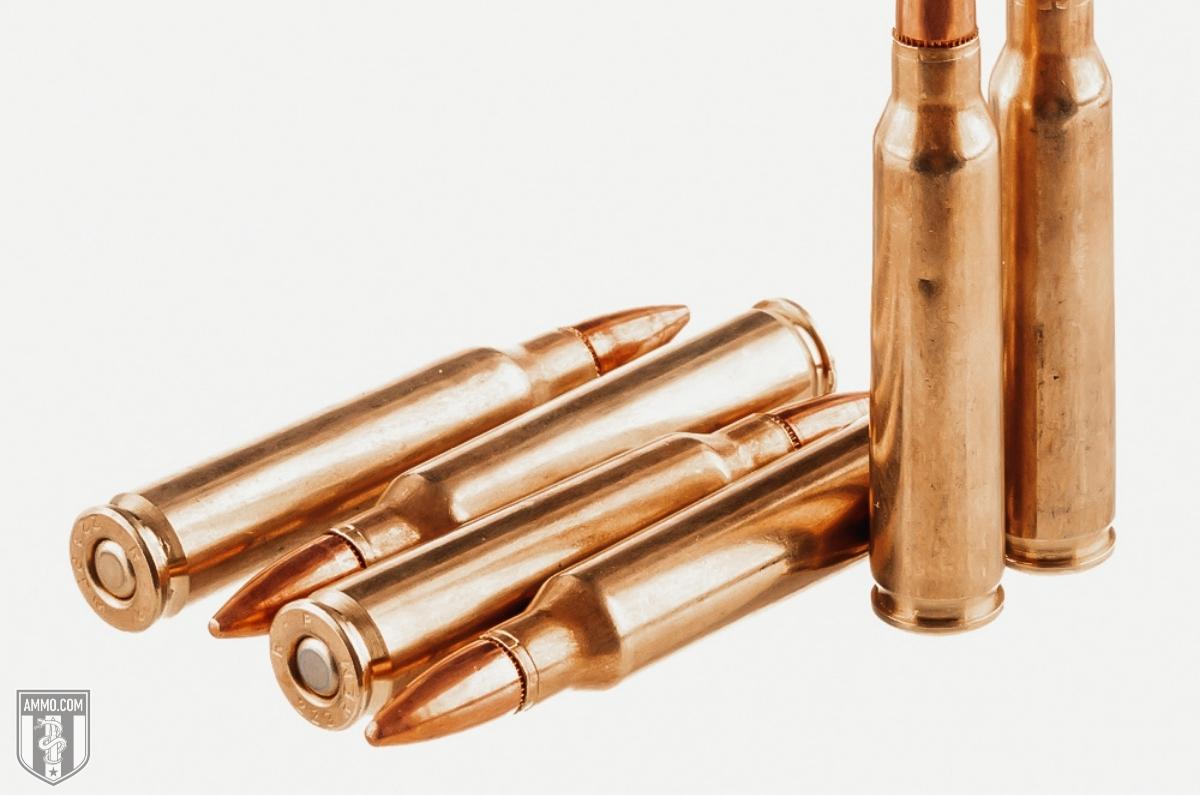
The choice to use the 222 Rem Mag over the 222 Rem was a question of case capacity. The 222 Remington Magnum offered about 5% more case capacity over the 222 Rem and we can see this as the capacity for the 204 Ruger is 33.2 gr compared to 31.4 gr for the 223 Remington. More propellant translates into higher muzzle velocity, which is one of the key selling points for the 204 Ruger.
Not only does the 204 pack in more powder, but it generally fires lighter bullets as well. The 204 Ruger is designed to fire 0.204" diameter bullets while the 223 Rem will fire 0.224" bullets. The 204 Ruger is capable of 24-45 grain bullets with 24, 32, and 40 grainers being the most popular. The 223 Remington can fire bullets between 35-90 grains with the 50, 55, 62 grain bullets being the most popular.
The 223 and 204 have the same base diameter and overall case length, meaning that both cartridges can be fired from the AR-15 platform. Converting a standard AR-15 to shoot 204 Ruger would only require a simple barrel change.
Although the overall length is the same, the case length is slightly different with the 204 Ruger being the longer case of the two at 1.85" compared to 1.76" for the 223. As 0.204" bullets are shorter compared to 0.224" bullets, more space in the chamber can be utilized for a slightly longer case thereby increasing case capacity slightly.
The final difference between these two rounds is in the established SAAMI maximum chamber pressure. The 223 Rem can handle 55,000 psi whereas the 204 Ruger can withstand 62,000 psi per SAAMI specs.
Recoil
The 204 Ruger has less recoil than the 223 Remington, but both rounds are considered as being low recoil by most shooters.
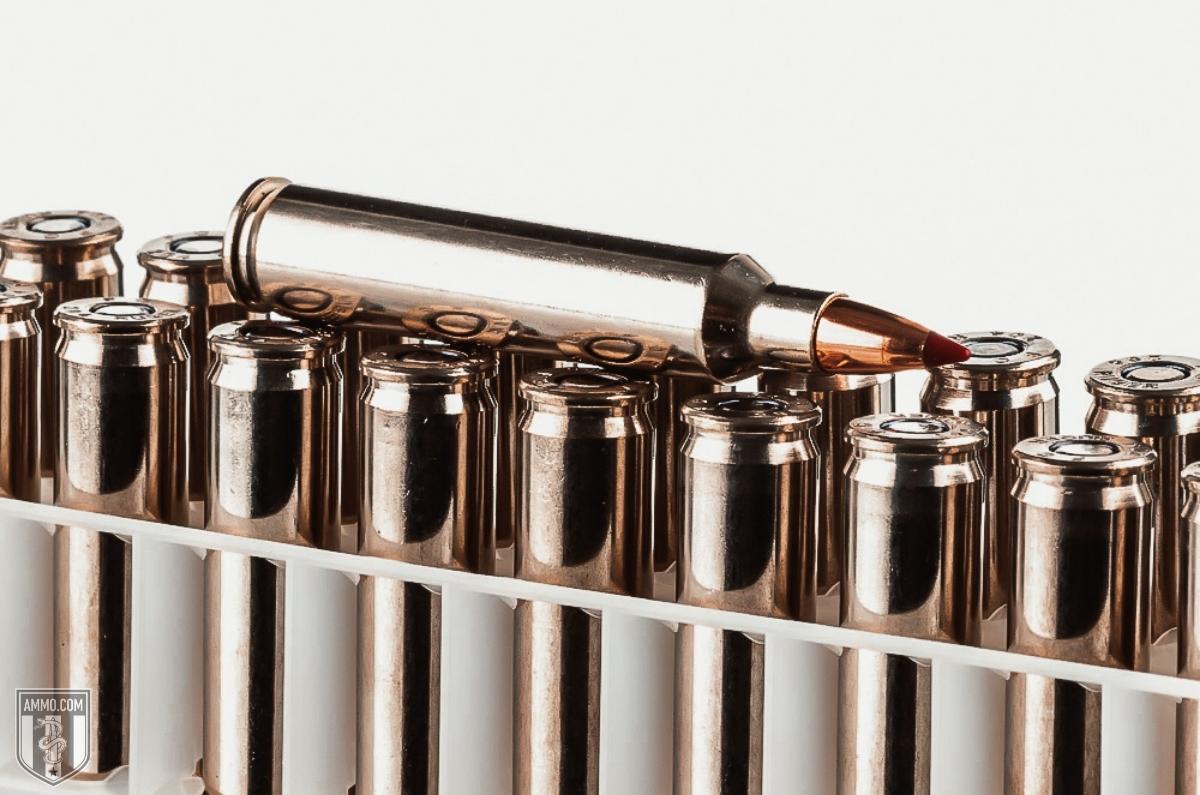
Recoil is an important consideration when purchasing a new rifle as a round with heavy recoil will be more difficult to control and will slow your rate of follow up shots.
Recoil is affected primarily by muzzle velocity (FPS), powder charge, bullet weight, and rifle weight.
There's no denying that the 204 Ruger is a high velocity round with a larger powder charge than the 223, however the 204 will generally fire lighter bullets than the 223 as well.
On average with a consistent rifle weight of 7 pounds, the 204 Ruger will have a free recoil of around 3.8 ft-lbs compared to around 4-5 ft-lbs for 223 Rem depending on the bullet weight and load.
That's incredibly low recoil for a centerfire rifle, however varmint rifles generally run on the heavier side as long range shooters want an incredibly rigid and stable platform. If we increase the rifle weight to 8.5 pounds, the free recoil drops to 2.9 ft-lbs for 204 Ruger and 3.5 ft-lbs for 223 Rem.
Although not as soft shooting as a rimfire cartridge, the 204 Ruger has less recoil than the 223.
However, most shooters will be unable to discern much difference between these two rounds in terms of recoil, as they are both incredibly soft shooting.
Rifle Twist Rate
One important aspect of each cartridge that needs to be mentioned is the barrel twist rate used for each.
As the 204 Ruger fires lighter bullets, it will generally have a slower twist rate than the 223 Remington.

Most 204 Ruger barrels will have a 1:12 twist rate, which means the bullet will make one revolution per 12 inches of barrel length. Slower twist rates are ideal for stabilizing lighter bullets, while faster twist rates are needed for stabilizing heavier bullets.
Due to military specifications and bullet requirements, many rifles chambered in 223 Remington will have twist rates as fast as 1:7, with 1:8, and 1:9 also being very common on AR-15 style rifles with shorter barrels. Bolt action 223 Remington rifles with longer barrel lengths are often found in 1:10 and 1:12 twist rates.
The faster barrel twist rates of the 223 allow it to properly stabilize heavier bullets like the 77 gr OTM Sierra Matchking or the 80 gr Berger VLD Match bullet.
Muzzle Velocity, Kinetic Energy, and Trajectory
The 204 Ruger generally has higher muzzle velocity and a flatter trajectory while the 223 Remington is superior in terms of kinetic energy.
For this comparison we will analyze four different factory loads for the 223 Rem and 204 Ruger. For the 204 we will compare the Hornady 32 gr V-MAX and the Nosler 40 gr Ballistic Tip Hunting rounds and for the 223 Remington we will compare the Hornady 53 gr V-MAX and the Federal Gold Medal Match 73gr Berger HPBT loads.
In terms of muzzle velocity, the 204 Ruger comes screaming out of the barrel at 4,225 fps and the lighter 32 gr V-MAX bullet is faster than the other 3 loads at all ranges. The 40 gr Nosler load is comparable to the 223 Rem 53 gr V-MAX load as the 204 has a muzzle velocity of 3,625 fps compared to 3,465 fps for the 223. The 73 gr Berger match load is the slowest at 2,800 fps.

High velocity rounds are typically very flat shooting, and the 204 Ruger is no exception to this. The 32 gr V-MAX load for the 204 has the flattest trajectory of the four factory loads with only -31.8" of bullet drop at 500 yards compared to -40.9" and -62" for the 223 Remington loads.
However, the heavier bullets of the 223 Remington consistently outstrip the 204 Ruger in terms of kinetic energy. As the Hornady 53 gr V-MAX load for 223 has the highest muzzle energy at 1,413 ft-lbs compared to 1,268 ft-lbs and 1,167 ft-lbs for both 204 Ruger options.
Barrel Life
One issue that many shooters encounter when scouring online forums for answers about a new potential caliber to add to their collection is the issue of barrel life.
When you increase case capacity and reduce bullet diameter, you are forcing more pressure and burning powder down the barrel with each pull of the trigger. This will often increase wear and tear on the rifling and accuracy can begin to suffer over time.
However, the question remains, is the 204 Ruger a "barrel burner" like the 220 Swift or is it gentle on barrels like the 223?
Although the consensus between shooters varies based on their own personal expectations, most marksmen report seeing accuracy degrade around 3-4,000 rounds for the 204 Ruger. In contrast, the 223 Rem can last upwards of 7-10,000 rounds before needing a barrel change.
Barrel life is hard to measure, as accuracy levels are somewhat subjective between shooters.
Many long range marksmen report that the 204 Ruger is capable of consistently achieving ½ MOA groups with proper handloads and a match barrel. This level of accuracy is more than enough for popping prairie dogs and woodchucks but benchrest shooters require the highest levels of accuracy. For them, degradation from ½ MOA to 1 MOA may be unacceptable.
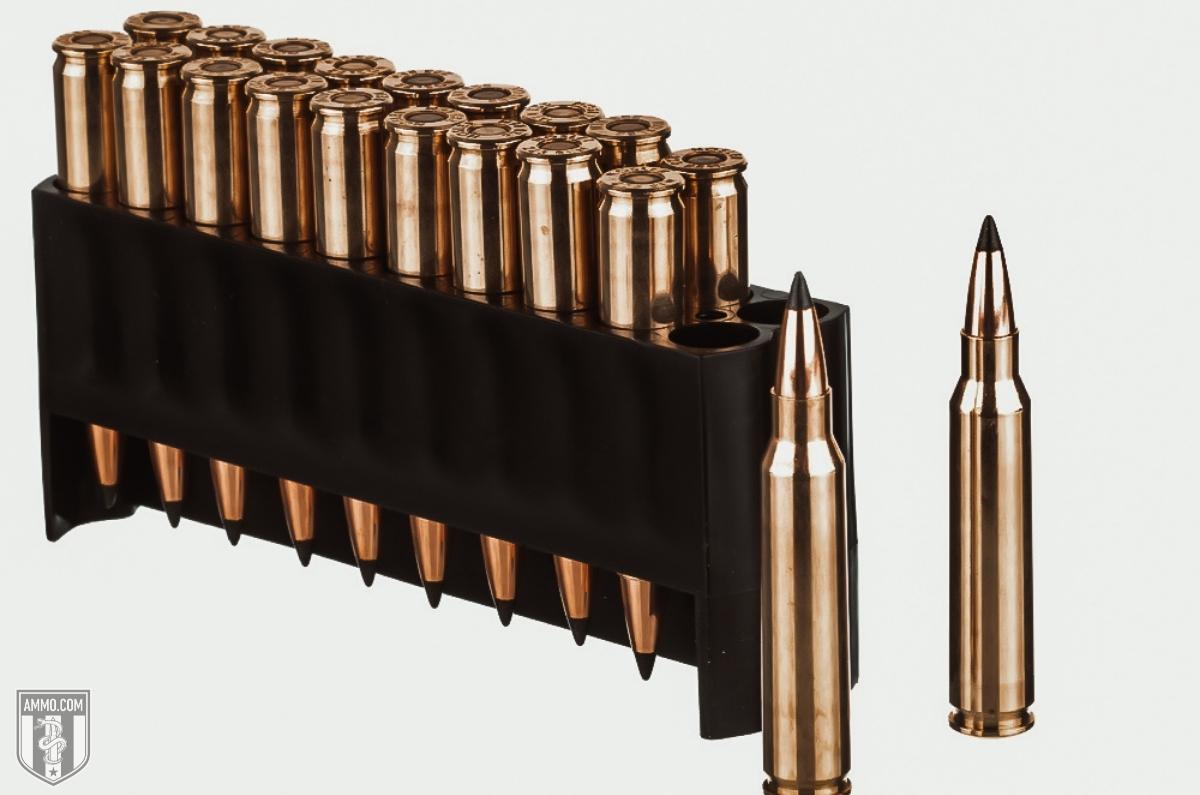
The question of barrel life revolves around the question of how accurate you need your rifle to be.
Barrel wear is accelerated with heat, meaning that long, continuous strings of fire are harder on barrels than slower rates of fire. Furthermore, firing handloads that have powder charges below book maximum also helps reduce premature barrel wear.
Most shooters would not classify the 204 Ruger as a barrel burner, but the 223 will last considerably longer than a 204 given the same number of rounds.
Ballistic Coefficient and Sectional Density
As it fires heavier bullets, the 223 Remington will typically have a higher ballistic coefficient and sectional density than the 204 Ruger.
Ballistic coefficient (BC) is a measure of how aerodynamic a bullet is and how well it will resist wind drift. Sectional density (SD) is a way to evaluate the penetration ability of a bullet based on its external dimensions, design, and weight.
Although the 204 Ruger has an incredibly high velocity and is very flat shooting, many marksmen comment on how susceptible the lower caliber bullet is to wind drift. Take for example the two Hornady V-MAX bullets we compared earlier; the 204 Ruger 32 grain bullets had a ballistic coefficient of 0.210 compared to 0.290 for the 53 gr 223 Rem Hornady V-MAX. Even the heavier Nosler 40 grain bullets cannot compete with the 223, as the 204 bullet has a BC of 0.239 while the Nosler 73 gr bullet has the highest ballistic coefficient at 0.348.
This trend continues with sectional density, as the heavier bullets of the 223 Rem will generally hit harder and penetrate deeper than the lighter 204 caliber bullets. For the 204 Ruger, the 32 gr V-MAX has a SD of 0.110 while the heavier 40 gr Nosler bullet has a SD of 0.137. The 223 Remington offerings measure 0.151 for the 53 gr V-MAX and 0.208 for the 73 gr Berger option.
Hunting
When it comes to varmint hunting, both the 204 Ruger and 223 Remington are excellent options for the discerning prairie dog popper.
Although the 223 Rem outpaces the 204 Ruger in most ballistic categories, the flat shooting 204 Ruger is making a name for itself as an outstanding opting for thin skinned pest control. The smaller caliber bullet also causes less damage to the pelt and the meat of the animal, if this is something you are concerned about. That being said, the 223 has long been considered one of the premier varmint hunting cartridges available as factory ammo is inexpensive and readily available.
For predator hunting, many shooters prefer the heavier bullets offered by the 223 Remington as they hit a bit harder and penetrate deeper. This is not to say that the 204 is ineffective at hunting larger varmints game like coyotes and foxes, as many hunters utilize the cartridge for these animals every year. The 223 is just slight better equipped to handle these larger animals with bullets like the Sierra Blitzking and Nosler BTV.
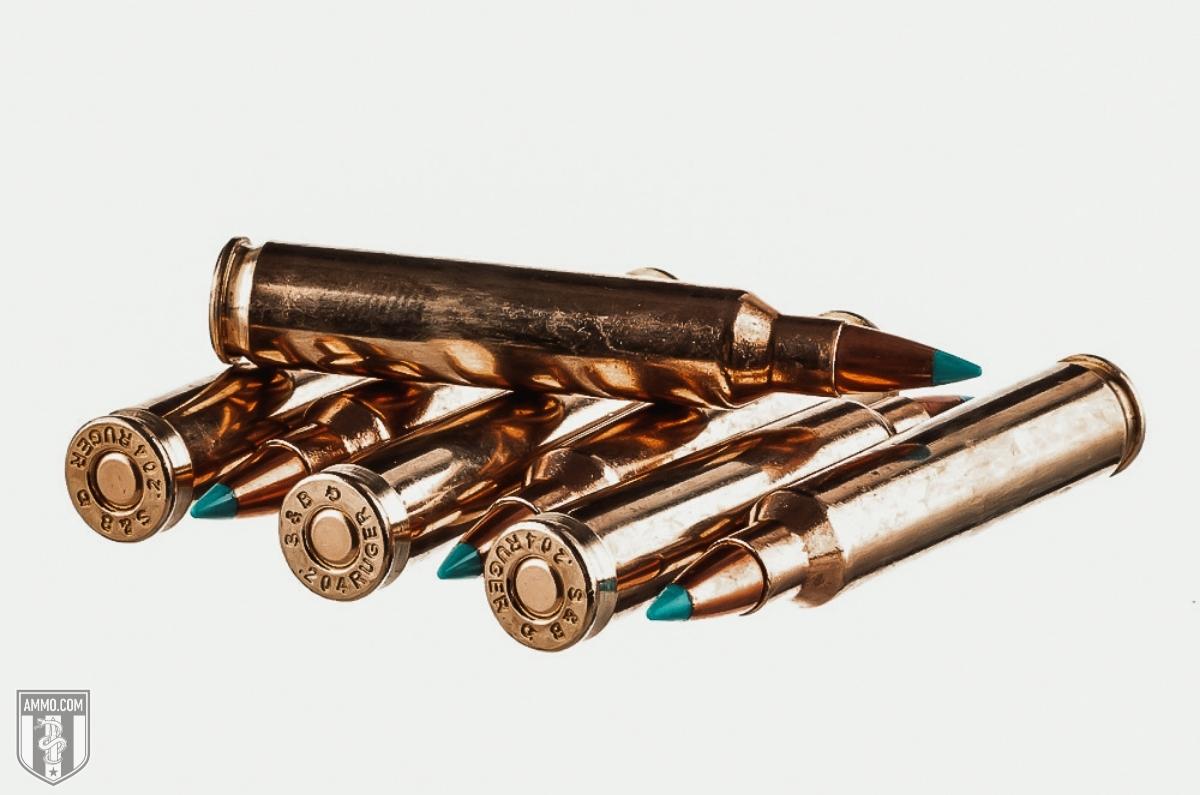
When it comes to big game hunting, the 223 Rem and its heavier bullets are the better option as the lighter 204 Ruger simply does not do enough damage to ethically harvest a deer. It is a point of contention in the hunting community if 223 Remington is suitable for whitetail, as many states prohibit the use of 223 for deer. However, the heavier bullet options for 223 such as the 75 and 77 grain varieties have been shown to be very effective against large game with proper shot placement.
Ammo and Rifle Cost/Availability
The 223 Remington is one of the most popular centerfire cartridges in North America. As it is the frontline battle cartridge for the US military, there are multiple sources of surplus ammo as well as a myriad of different varieties of hunting ammo available. Furthermore, as the 223 Rem has been around for over 60 years, considerably more development has been done on the cartridge to enhance its abilities such as the Ackley Improved version of the 223.

On the other hand, the 204 Ruger is a relative newcomer to the shooting community as it has only been on the market since 2004. Although the release of the 204 Ruger was generally successful, it is by no means on par with the popularity of the 223.
Factory ammo for 223 Remington is easy to find at almost any place that sells firearms or 223 bulk ammo is also available, whereas 204 Ruger will be much for difficult to source at your local stores. Inexpensive FMJ plinking ammo can be had for around $0.45/round while premium hunting ammo will typically cost around $1-2/round. On the other hand, you'll be lucky to pick up any ammo for the 204 Ruger for less than $1/round with all the premium-grade ammo costing at least $1.50/round or more.
In terms of rifles, the 223 is by far the more popular caliber as it can be fired from the AR-15 rifle. However, there are multiple bolt action and single shot rifles available for 223 from manufacturers like Winchester, Remington, Browning, Savage, Ruger, and Sako.
The 204 Ruger is primarily offered as a bolt-action rifle as these shooters want the achieve high levels of accuracy. Most 204 rifles are built by Savage and Ruger, although Mossberg, Howa, and CZ also have some options for the Ruger round.
Reloading
If you like to handload your own ammo, both cartridges offer you a lot of options for customization in terms of projectiles and powders to make the perfect sub-MOA reloads for your hunting rifle.
Reloading is also one method that shooters utilize to reduce their overall cost per round and ensure that their ammo is consistent and tuned to their rifle.
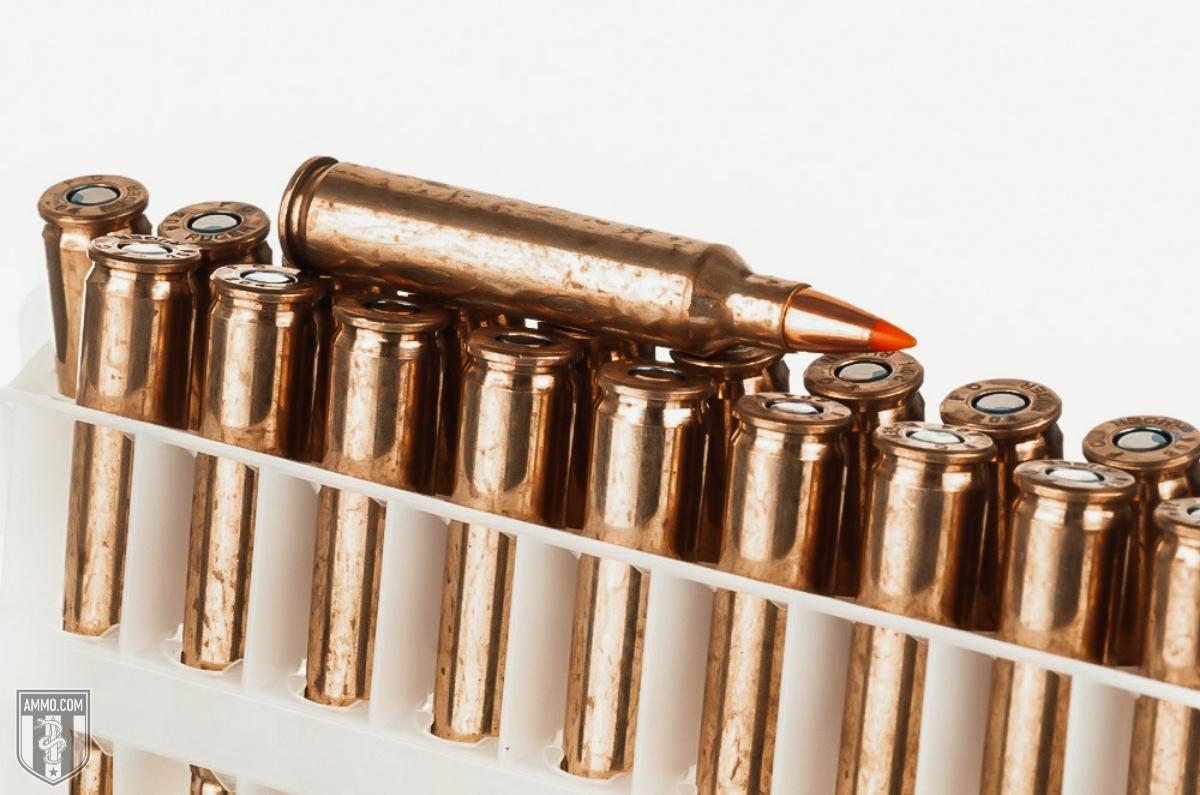
Components are plentiful for both the 223 and the 204, however the proliferation of the 223 Remington and other compatible calibers such as the 220 Swift and 22-250 Remington will mean that there will be more bullet options for the 223 as opposed to the 204 Ruger.
If you reload for the 204, you will mostly be buying bullets for that cartridge as there are only a few wildcat cartridges that utilize 204 caliber bullets. Those wildcat cartridges would include the 20 BR, Tactical 20, 20 PPC, and 20 Vartarg.
Finding reloading brass for 204 Ruger is another hurdle, as it is still somewhat of a niche caliber and has not achieved widespread success like the 223. In a pinch, you could neck down and fireform 222 Remington Magnum brass to make your own 204 Ruger cases should factory brass be unavailable. However, the best way to stock up of 204 brass is to simply save your cases from factory ammo for reloading later.
Final Shots: 223 vs 204 Ruger
The 204 Ruger and 223 Remington are two varmint cartridges that are extremely effective against small game like groundhogs, prairie dogs, and woodchucks.
The 223 Remington is one of the most popular cartridges in North America due primarily to the proliferation of the AR-15. Ammo for the 223 is easy to find, inexpensive, and has low recoil.
The 204 Ruger is a newer cartridge that straddles the line between rimfire rounds like the 17 HMR and faster centerfire cartridges like the 22-250 Remington and 220 Swift. Built for speed, the 204 Ruger claims the #2 spot in the competition for the highest muzzle velocity, is incredibly flat shooting, and has less recoil than the 223.
Although the 204 Ruger offers extremely high levels of accuracy, most varmint hunters will opt for the 223 Remington as ammo is easier to source locally and reloading components are readily available. However, if you love speed and pushing the envelope of accuracy, then the 204 Ruger might be a good option for something new to play with.
No matter which cartridge you choose, make sure you stock up on ammunition here at Ammo.com and I'll see you on the range!
204 Ruger vs 223: The Need for Speed originally appeared in The Resistance Library at Ammo.com.























